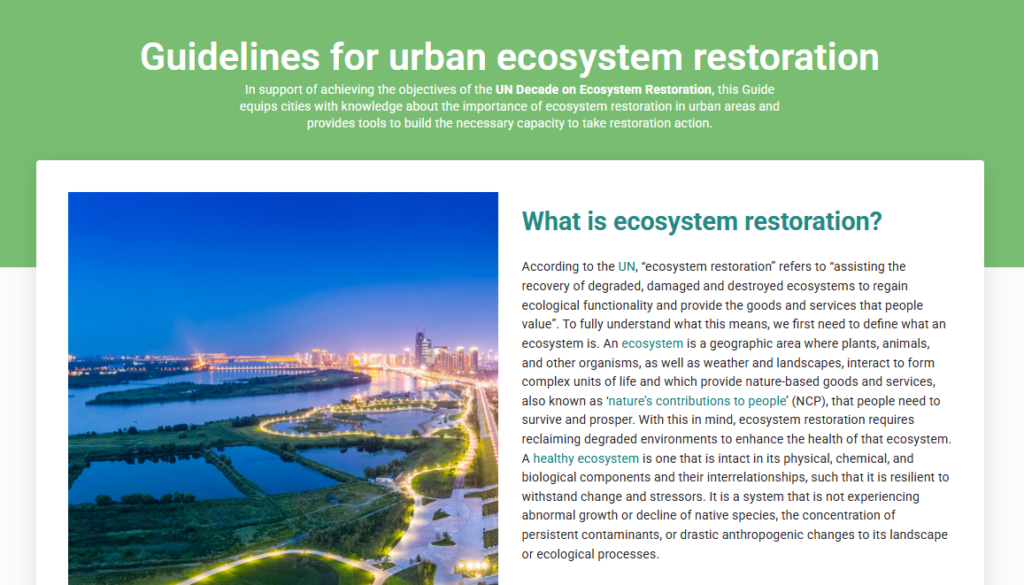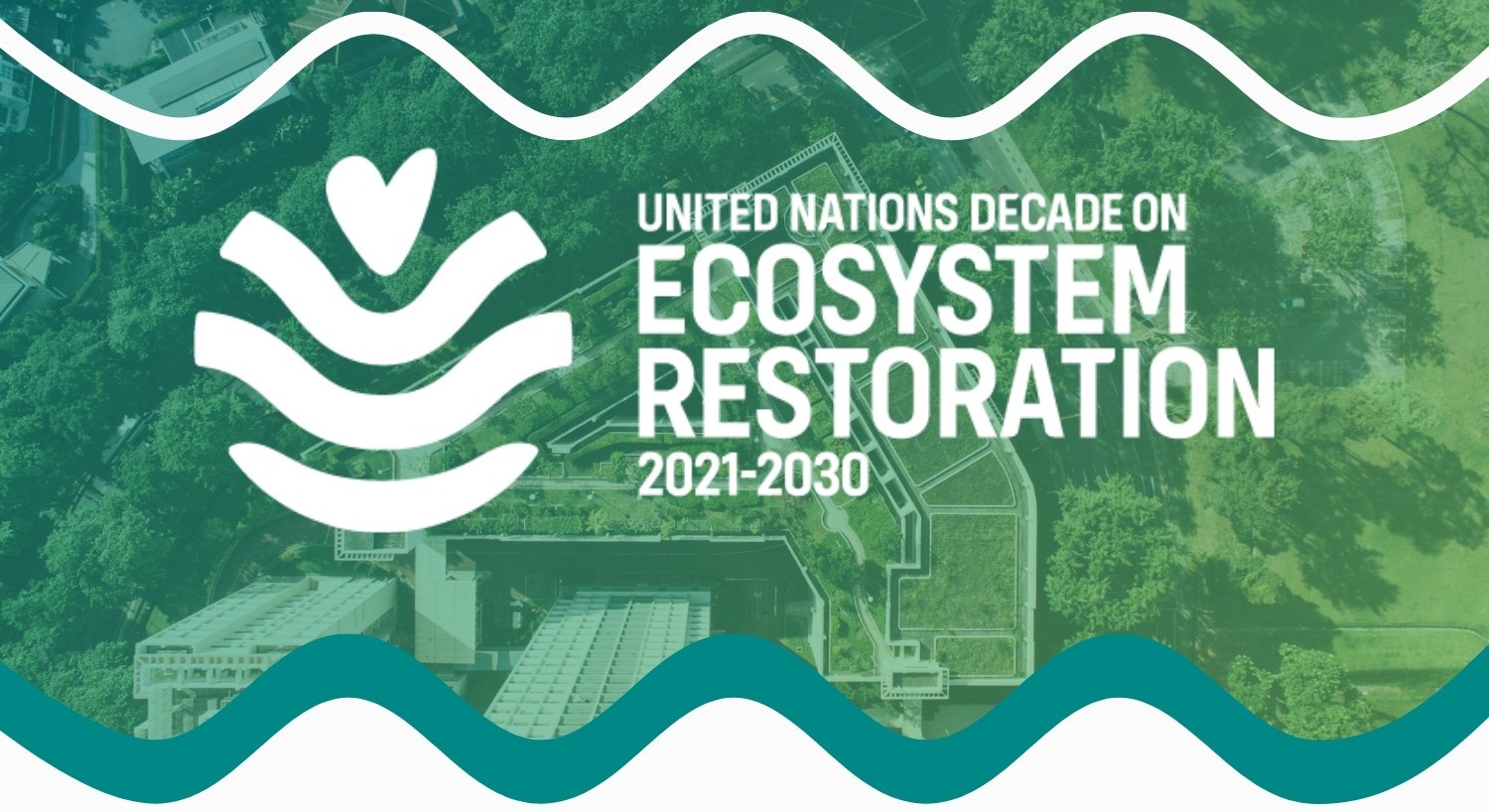Ecosystem restoration is essential for human prosperity and well-being. Healthy ecosystems provide critical resources—such as food and water—while also supporting health, security, and economic stability. As our population continues to grow, these benefits will become even more vital. By stopping and reversing land and ocean degradation, we can prevent the extinction of one million endangered species. Scientists estimate that restoring just 15% of ecosystems in priority areas could reduce extinctions by 60% by improving habitats.
Communities Menu
Ecosystem restoration is the process of halting and reversing degradation, resulting in improved ecosystem services and recovered biodiversity. Ecosystem restoration encompasses a wide continuum of practices, depending on local conditions and societal choice.
Depending on objectives, restored ecosystems can follow different trajectories:
From degraded natural to more intact natural ecosystems (often by assisting natural regeneration)
From degraded, modified ecosystems to more functional modified ecosystems (e.g. restoration of urban areas and farmlands)
From modified ecosystems towards more natural ecosystems, providing that the rights and needs of people who depend on that ecosystem are not compromised.
You can read more about this in our ecosystem restoration guideline.

The UN Decade on Ecosystem Restoration highlights eight major ecosystems that have suffered significant degradation. Each can be revived by reducing environmental pressures and implementing targeted restoration efforts to accelerate recovery.

Forests

Urban areas

Peatlands

Mountains

Oceans & coasts

Freshwater

Farmlands

Grasslands & savannah
This process involves protecting key ecological functions—such as photosynthesis, carbon sequestration, nutrient cycling, and water filtration—while also restoring biodiversity.
Cities are both a major cause of ecosystem degradation and highly vulnerable to its impacts. Although urban areas occupy less than 1% of the Earth’s land, they are home to more than half of the global population. Despite their infrastructure of steel, concrete, and roads, cities remain ecosystems whose health directly affects our quality of life. Well-functioning urban ecosystems improve air and water quality, regulate temperature by mitigating urban heat islands, and enhance well-being by providing protection from natural hazards and creating spaces for recreation.
However,
rapid and unplanned urbanization continues to reshape the natural world, often leading to environmental destruction. If left unchecked, this process can severely damage ecosystems, which in turn negatively impacts urban populations. As cities expand, they encroach upon agricultural and industrial lands, forcing these sectors to push further into natural ecosystems. Integrating nature-based solutions (NbS) into urban planning is essential for restoring degraded environments, reconnecting cities with nature, and reducing climate change impacts on urban communities.
Ecosystem restoration
is key for the achievement of both biodiversity and climate objectives. It is a key component of the Kunming-Montreal Global Biodiversity Framework (GBF), adopted under the Convention on Biological Diversity (CBD). The framework sets ambitious global targets to halt and reverse biodiversity loss by 2030, including restoring at least 30% of degraded ecosystems across terrestrial, inland water, coastal, and marine areas (Target 2). The Framework also introduces a standalone target (Target 12) on enhancing urban blue and green spaces, acknowledging that such spaces can provide important habitat for species, improve habitat connectivity, provide ecosystem services and help mediate extreme events.
At the same time ecosystem restoration is also critical for climate change adaptation and resilience. According to UNEP, ecosystem restoration can play a critical role in helping societies address a range of climate hazards, such as intense precipitation, drought, heat and coastal hazards. Healthy ecosystems typically play a buffering role, mediating and moderating such hazards. As presented in IPCC Climate Change 2022: Impacts, Adaptation and Vulnerability, damage and degradation of ecosystems exacerbate the projected impacts of climate change on biodiversity. Space for nature is shrinking as large areas of forest are lost to deforestation, peat draining and agricultural expansion, land reclamation and protection structures in urban and coastal settlements. To affirm this significance, the Global Goal on Adaptation under the Paris agreement has Target 9d focused on reduction of climate impacts on ecosystems and biodiversity through ecosystem restoration among other means.

To accelerate sustainable urban development, the United Nations Environment Programme (UNEP) has been actively promoting the use of nature-based solutions. UNEP’s Cities Unit launched the Generation Restoration Project (2023-2025), to address key political, technical, and financial barriers to large-scale ecosystem restoration, particularly in urban areas.
As part of the UN Decade on Ecosystem Restoration and contributing to the Global Biodiversity Framework, the initiative will work with fourteen pilot cities, along with a growing network of eleven role model cities, to scale up urban nature-based solutions. By prioritizing restoration, cities can foster resilience, enhance biodiversity, and create healthier, more sustainable environments for future generations.
The Kunming-Montreal Global Biodiversity Targets that speak to Ecosystem Restoration

This target emphasises the need for ecosystem restoration and enhancing nature-based solutions to address climate change, water management, food security, and biodiversity. It aims to restore ecosystems in a way that supports both biodiversity and human well-being.

One of the main targets for ecosystem restoration under the GBF is a call for restoring at least 30% of degraded ecosystems by 2030. This is part of the effort to achieve net positive outcomes for biodiversity, especially in ecosystems that have been severely impacted by human activities.

Focuses on increasing the area, quality, connectivity, and access to green and blue spaces, particularly in urban and densely populated areas, to enhance human health and well-being. Target 12 compliments target 2 by emphasizing the integration of nature-based solutions (NBS) and green infrastructure into urban planning.

This target focuses on increasing the area of protected areas and restoring degraded or fragmented habitats, which is essential for the restoration of biodiversity. It directly supports ecosystem restoration by focusing on regenerating habitats that support a diverse range of species.
Want to report on what your city is doing to achieve the goals of the Global Biodiversity Framework?
You can do this on the CitiesWithNature Action Platform, CitiesWithNature is recognized in CBD Decision 15/12 as the platform where cities and regions can report on, and track their progress against, their commitments to contributing to the Kunming-Montreal Global Biodiversity Framework and National Biodiversity Action Plans.
Check out our directory to see which commitments and actions link to which targets of the GBF.
